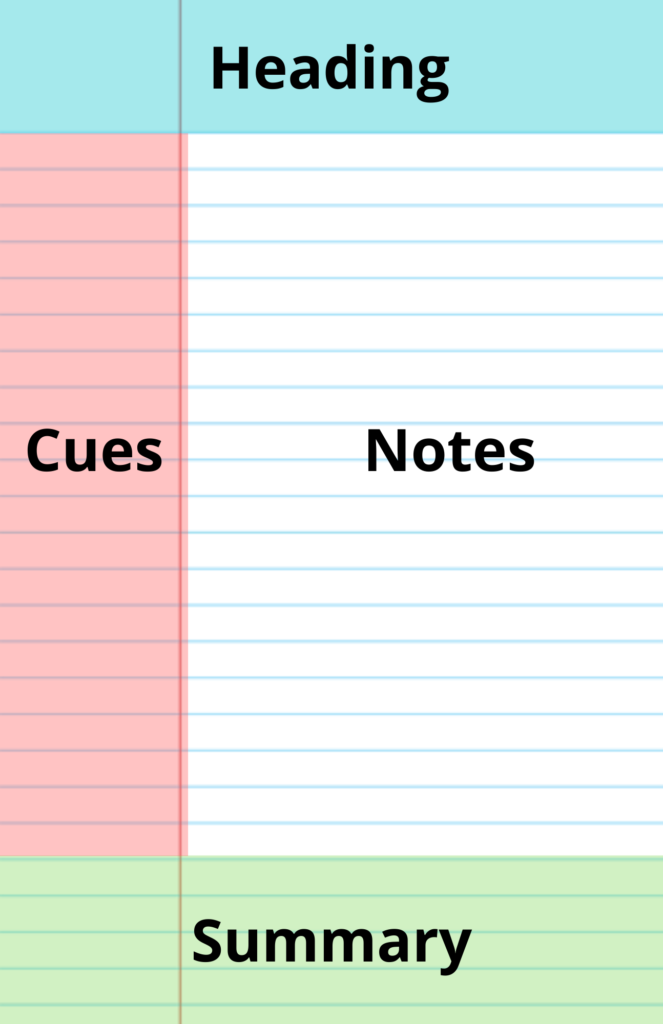With so much changing in the educational world, there is one thing that is no doubt here to stay: note taking. Whether you print out each and every slide your professor sends you, write painstakingly beautiful notes in a pristine bullet journal, or rely on a transcription tool, there is no doubt that taking excellent notes is a key to academic success.
So with something so important, why not try out a new method that might also improve your memory of the lecture? Enter the Cornell note-taking method.
To start, divide up your page into three sections like this:

The largest section on the right is where you take your normal notes throughout class. Bullet points, full sentences, doodles, it’s up to you.
The thin section to the left is for cues. You can write these down in class based on what your instructor seems to point out as important, but it’s also important to go back through your notes after class to write out prompts to help you remember what was discussed in class. These cues can be anything, as long as they help you remember what was discussed – for example rough notes on the image on the slide, ties to previous lectures, a joke a classmate made, a scene in Grey’s Anatomy where they talk about this very biology subject, the list goes on.
The very bottom is for a summary of the page in your own words; try to condense everything you’ve written on the page into a few lines or less. By re-phrasing your notes you are giving yourself another opportunity to digest the lecture material and are increasing the chances you’ll remember it.